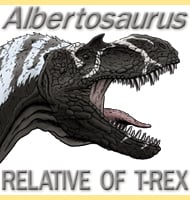In Depth
At the time of the genus naming in 2018, Italy was not particularly well known for dinosaur discoveries, the only other theropod being Scipionyx, named in 1998. So when it was announced that a new, much larger theropod dinosaur had been discovered, you can imagine the news headlines.
Named Saltriovenator. this new dinosaur was a large predator, and amongst the largest known in Europe. Unfortunately Saltriovenator is still only known from very partial and damaged fossil bones, so precise estimates to the size of this dinosaur are a rough guess at best. However, careful analysis of the fossil has led the describers of this genus to conclude that Saltriovenator was most likely a ceratosaur, meaning similar genera like Ceratosaurus are our best guess for filling in the blanks.
The holotype individual seems to have some to its end in a coastal location with the body being swept out to sea, an analysis confirmed by damage to the holotype fossil bones being caused by marine scavengers. This might imply that Saltriovenator was a bit of a beach comber, perhaps looking for the bodies of large marine animals washed ashore. With Europe being a collection of islands in the early Jurassic, this seems to have been a common survival strategy for the larger theropod dinosaurs of the time in this area. Other genera such as Eustreptospondylus, Piveteausaurus and Dubreuillosaurus among others also speculated to have scoured beaches for food.
Further Reading
- The oldest ceratosaurian (Dinosauria: Theropoda), from the Lower Jurassic of Italy, sheds light on the evolution of the three-fingered hand of birds. - PeerJ 6:e5976:1-78. - C. Dal Sasso, S. Maganuco & A. Cau - 2018.










